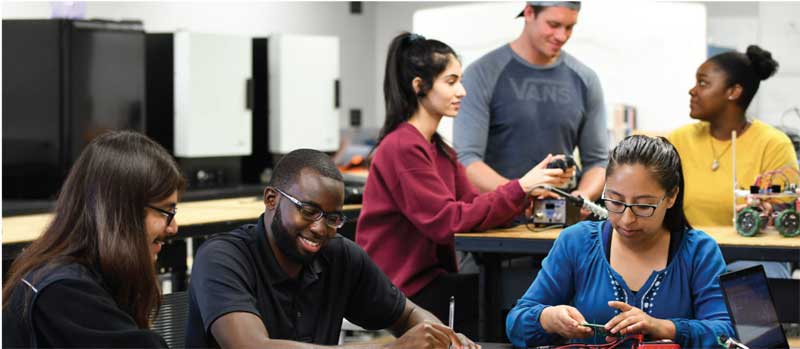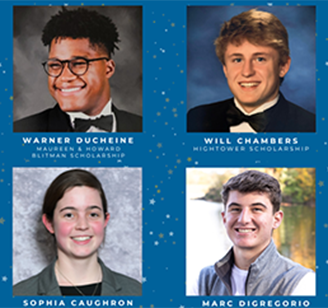July/August 2019
Communities: Education
Making a Statement on Diversity
US demographics are shifting, with a “majority-minority” population expected by 2045. As higher education tries to better meet the needs of all students, a growing number of institutions are asking potential faculty to submit an additional item in their applications. Diversity statements elaborate on candidates’ previous and expected contributions toward diversity and inclusion. In engineering, which has struggled to increase the representations of minorities and women, such statements can serve as another tool with which to evaluate applicants.
The University of California system was one of the early leaders in this area. Almost all of its campuses have required the statements for the last decade, explains Pamela Cosman, a professor of electrical and computer engineering and former faculty equity advisor for UC San Diego’s engineering school.
UCSD offers a number of online resources for applicants crafting the statements and committees evaluating them. The statements’ purpose: “to identify candidates who have the professional skills, experience, and/or willingness to engage in activities that will advance institutional diversity and equity goals.”
According to Cosman, reviewers look for factors such as level of effort, initiative, and creativity.
California State University, Los Angeles, asks all faculty applicants to submit a narrative statement describing their “commitment to working effectively with faculty, staff, and students in a multicultural/multiethnic urban campus environment with a substantial population of first-generation students.”
Emily Allen, dean of the College of Engineering, Computer Science, and Technology, explains that the university student population is 65% Hispanic and 70% first-generation college students (and the engineering school is 85% men). Thus, the narrative statements screen for interest in the university’s mission of educating a diverse student population.
Allen, chair of the American Society for Engineering Education’s Engineering Deans Council Diversity Committee, says statements must go beyond emphasizing diversity’s importance.
“Everyone knows what the [politically correct] things to say are,” she explains. “But not everyone has deeply thought about the issue or has experience that translates into a value system.”
The University of Washington’s College of Engineering has launched a “soft roll out” of a diversity statement requirement, according to Associate Dean of Diversity and Access Eve Riskin.
The statements are “another criterion by which to measure excellence” in the competitive faculty application process, says Riskin. But, she emphasizes, “you have to breathe it and live it,” not just spout platitudes.
“I want to hear what did you do,” says the professor of electrical and computer engineering. “What did you actively do to hire faculty that are diverse? What did you actively do to recruit diverse students? How did you support them?”
At Harvard University’s School of Engineering and Applied Sciences, not only must prospective faculty members provide a diversity, inclusion, and belonging statement, but also current faculty members are required to report how they promote diversity and inclusion. That information is a priority in decisions for faculty bonuses, along with other factors, according to the school’s dean, Frank Doyle.
Strong statements, Doyle says, are specific and describe past and current contributions to advancing diversity, inclusion, and belonging. They might incorporate
- aspects of pedagogy such as course design and classroom climate;
- efforts to support recruitment at conferences and minority-serving institutions;
- formal and informal mentorship of students and postdocs;
- support for student affinity groups;
- sharing research results to promote access to a wider public; and
- participation in professional organizations that advance diversity in STEM.
Not everyone supports schools’ use of diversity statements, however. Opponents assert that they violate academic freedom or favor a politically liberal mindset.
“No one is being told what to do or what to believe,” responds Doyle. “Above all, we value excellence—in teaching and research. We also prize faculty who are good institutional citizens.” Focusing on diversity, inclusion, and belonging is critical to attracting the best students and faculty and enabling creative and world-changing research, he says.
The statements are just one piece of an overall strategy for the engineering school, which has made “moving the needle on diversity, inclusion, and belonging a strategic priority.” Echoing Allen, Doyle adds, “faculty diversity statements are fundamentally just another means of advancing our educational mission.”
 STUDENTS AT CALIFORNIA STATE UNIVERSITY, LOS ANGELES, WORK IN THE NEW CAPSTONE SENIOR DESIGN LAB. AT CAL STATE LA, THE UNIVERSITY STUDENT POPULATION IS 65% HISPANIC AND 70% FIRST-GENERATION COLLEGE STUDENTS. ALL FACULTY APPLICANTS MUST SUBMIT A STATEMENT DESCRIBING THEIR COMMITMENT TO DIVERSITY. PHOTO: CAL STATE LA
STUDENTS AT CALIFORNIA STATE UNIVERSITY, LOS ANGELES, WORK IN THE NEW CAPSTONE SENIOR DESIGN LAB. AT CAL STATE LA, THE UNIVERSITY STUDENT POPULATION IS 65% HISPANIC AND 70% FIRST-GENERATION COLLEGE STUDENTS. ALL FACULTY APPLICANTS MUST SUBMIT A STATEMENT DESCRIBING THEIR COMMITMENT TO DIVERSITY. PHOTO: CAL STATE LA

 Volunteering at NSPE is a great opportunity to grow your professional network and connect with other leaders in the field.
Volunteering at NSPE is a great opportunity to grow your professional network and connect with other leaders in the field. The National Society of Professional Engineers (NSPE) encourages you to explore the resources to cast your vote on election day:
The National Society of Professional Engineers (NSPE) encourages you to explore the resources to cast your vote on election day:



